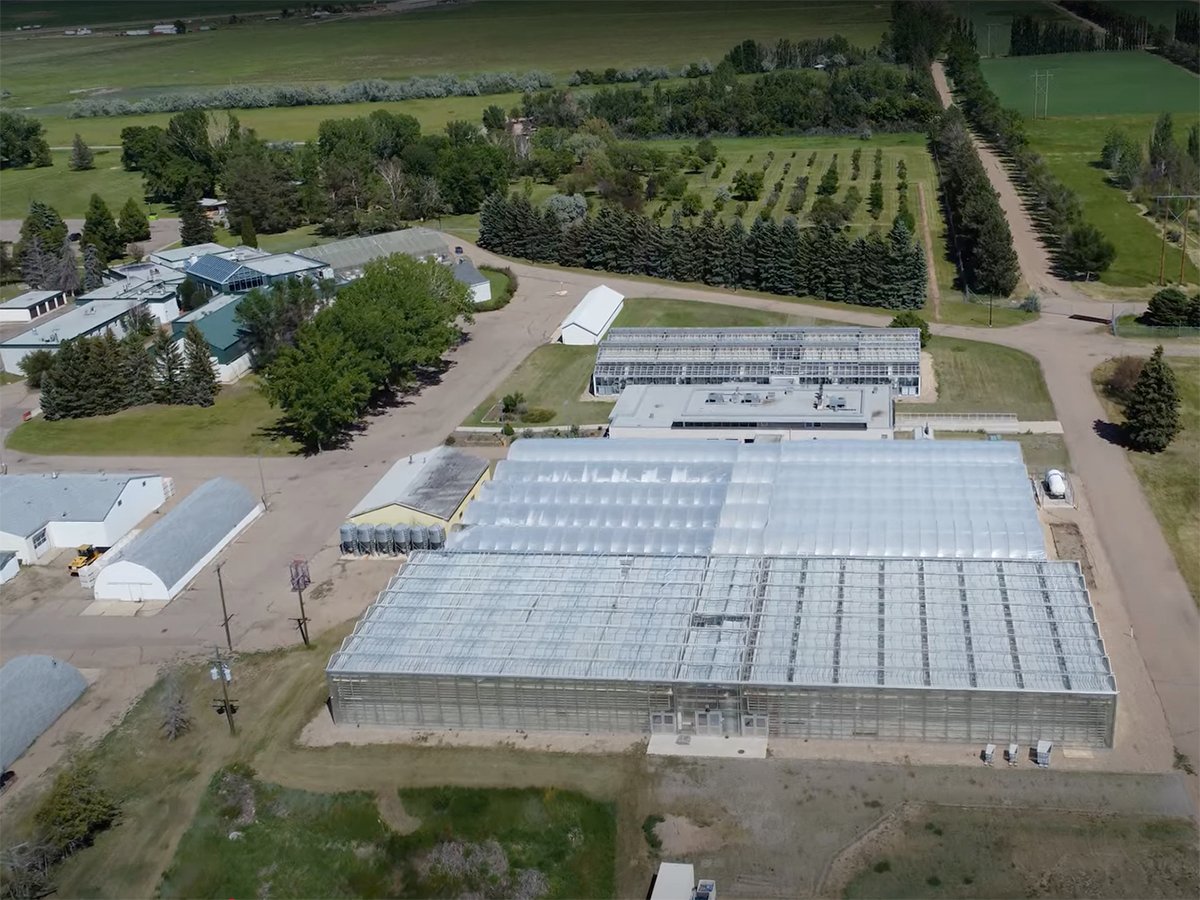Producer says tests on 100 bulls showed faster weight gain with less dry matter consumed. Savings and improved health have also been seen with pigs and poultry
ORILLIA, Ont. — There’s a new role for barley sprouts in the livestock industry, says a farmer who spoke at the Ecological Farmers of Ontario conference Dec. 6.
Darrell Roes said the sprouts can be combined with hay, minerals and supplements when they are 30 centimetres tall.
“It almost disappears in the hay, but the whole things smells like fresh sprouts. It’s not really wet anymore — the sprouts are 80 percent water — but it is damp,” Roes said.
“This replaces the grains, proteins and vitamins that you would use along with the pasture you grow on your farm.”
Read Also

Alberta crop diversification centres receive funding
$5.2 million of provincial funding pumped into crop diversity research centres
Roes, who had previously raised pigs conventionally and conducted feed ingredient evaluations for Ralston Purina, now farms on 26 acres near Waterloo, Ont.
He produces 2,000 pounds of sprouts a day and plans to expand to 12,000 lb., which will be enough to feed his own cattle, pigs and poultry and supply other farmers.
Cattle need about 30 lb. of sprouts each per day.
Roes said sprouts are also an option for farmers without enough land for a regular pasture system and for those looking to produce a grass-fed product in winter.
The sprouts are grown in a renovated 20 by 90 foot insulated building.
“It’s seed to feed in seven days,” he said.
“I’ve been testing the nutrition of everything, from the barley sprouts to the meat of the pigs and cattle.”
The process begins with the purchase of good quality seed, which Roes cleans thoroughly. He bought organic seed, even though he’s not certified as organic.
A peroxide wash kills mould spores that may be present. The seed is then soaked overnight in tanks for eight to 12 hours.
The following day, it is spread to a depth of one to two centimetres in long, narrow trays.
The barley is harvested in seven days when it’s about 30 cm, which is the maximum period before nutrition begins to deteriorate. Then it is rolled into mats, roots and all, similar in appearance to rolls of sod.
No special lighting is needed in the building.
Roes carefully maintains the temperature in winter at 18 to 20 C and keeps the humidity around 65 percent to stop mould from growing.
“If you have compromised seed, you can probably not grow sprouts this way,” he said.
“You need to run the room like a factory with precise controls.”
During warm weather the space can easily be ventilated, making mould far less of a concern.
The sprouts make up about half the ration for cattle. The remainder is hay and added nutrients.
Roes said it costs $159.87 per ton to grow sprouts at 80 percent moisture, which includes labour. The transformation of starches into sugars is a key consideration.
“You’re taking a pound of seed and turning it into nine lb. of feed. There is no more dry matter but it’s 30 percent more digestible.”
The sprouts were tested on 100 pastured-based Friesen bulls over 12 weeks. Those that received sprouts gained weight 41 percent faster and consumed 23 percent less dry matter. In addition, the cost of gain per pound of grain was reduced by 27 percent.
“The meat marbles really nicely and the general demeanour of my herd at home was better. They were calm and content,” he said.
Roes said a 50 percent savings in feed has also been found with pigs and poultry.
Pastured Berkshires received 65 to 70 percent of their ration from the sprouts, which resulted in good marbling and improved health. The meat also tended to stay moist when cooked.
The chickens received 50 percent sprouts and 50 percent scratch grain.
“The eggs we got were nice, with dark yolks.”
Roes said the system reduces water use, allows farmers to raise cattle without having to invest in a lot of land and reduces methane production because the feed is more digestible.
A thousand lb. of sprouts require 100 gallons of water per day. It is recycled several times before it given to the animals.
It can be expensive to set up the system. Roes said he paid $30,000 to import equipment from the United States, which allowed him to produce 2,000 lb. of sprouts per day.
He said he can reduce his expansion costs to a fraction of that amount by building his own system with the help of area fabrication shops.
Roes sold barley sprouts for $350 to $400 per ton last year. They have to be delivered daily, although perhaps every other day in winter.
He said other producers are doing the same thing, but their operations tend to be small.














